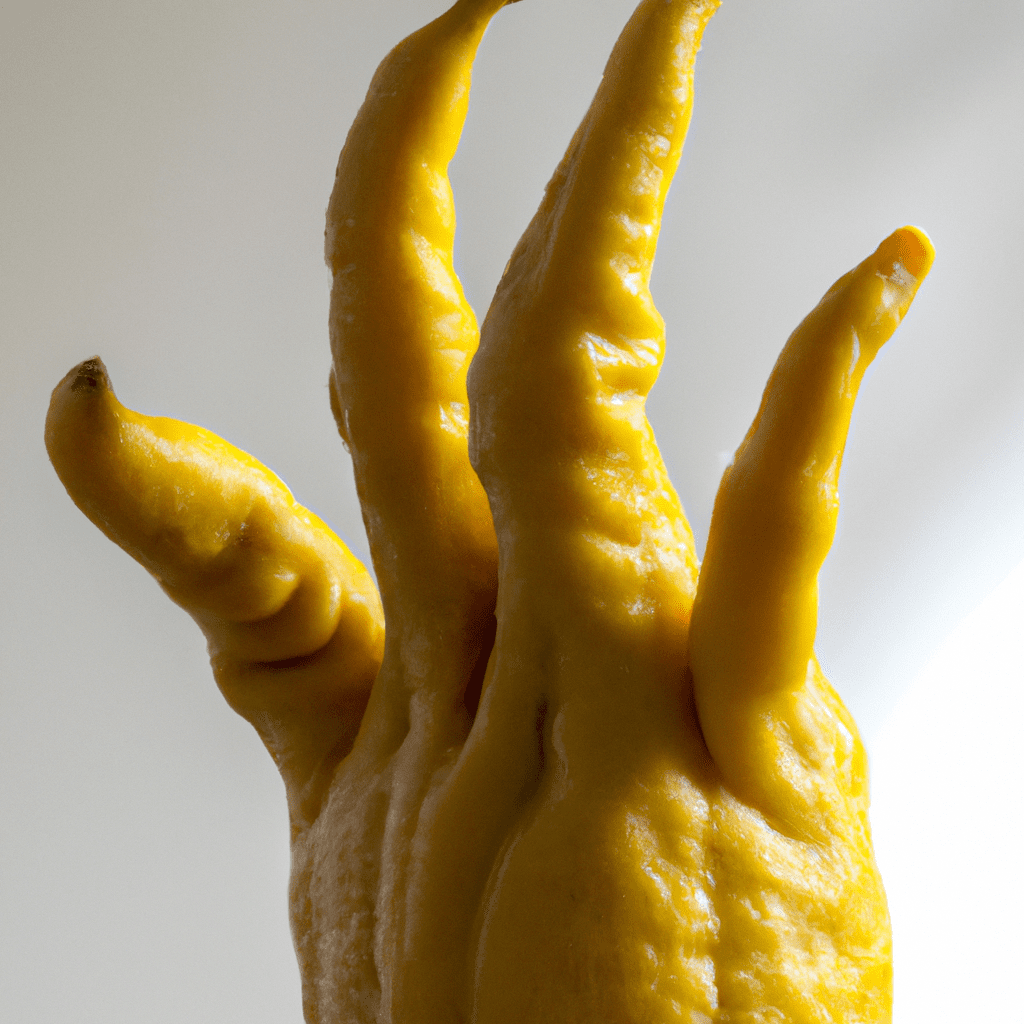What is Buddha’s hand (fingered citron)?
Buddha’s hand (also known as fingered citron) is a unique citrus fruit native to Asia and is believed to be naturally evolved from the citron fruit. Its weird-looking, finger-like shape makes it a favorite among chefs and consumers. The outside of the fruit has a distinctive yellow color and a waxy texture, while the inside is filled with a spongy white core. Its unique taste and scent make it a popular addition to salads and desserts. The fruit can be eaten fresh or dried and used to flavor fish and meat dishes as well. Buddha’s hand is also known for its medicinal benefits due to its high anti-bacterial and anti-inflammatory properties. The fact that it’s an exotic item in most parts of the world makes it highly sought after. To grow your own Buddha’s hand, plant seeds in a sunny spot with well-drained soil and plenty of water. You’ll be rewarded with the luck, love, and health it symbolizes!
What does Buddha’s hand (fingered citron) taste like?
Have you ever tried Buddha’s hand (fingered citron) before? Its unique flavor and scent make it a favorite among chefs and foodies. The taste is said to range from sweet and tart to intensely fragrant – some liken it to a combination of lemon, pineapple, and banana. The texture is also much different than typical citrus fruit; it’s spongy and almost grass-like compared to the typical smooth juice of oranges, limes, and lemons. It’s an interesting flavor and one that will surprise and delight anyone who takes a bite. If you’re looking to add a unique taste to your recipes, Buddha’s hand is the fruit for you.
What dishes do you find Buddha’s hand (fingered citron) in?
Buddha’s hand has been used in a variety of dishes across many cultural cuisines. For example, in Chinese dishes, such as yue gwa, Buddha’s hand is cooked similarly to a mandarin orange. In India, Buddha’s hand is used to make a type of sweet syrup infused with cardamom, almonds, and ghee. In Israel, the fruit is traditionally used to make sukkat orza, a special Purim dish. It can also be used to make sweet desserts or jams in other parts of the world. The versatility and uniqueness of Buddha’s hand is a delight for those interested in exploring new flavors and it’s a sure way to impress others at the dinner table.
